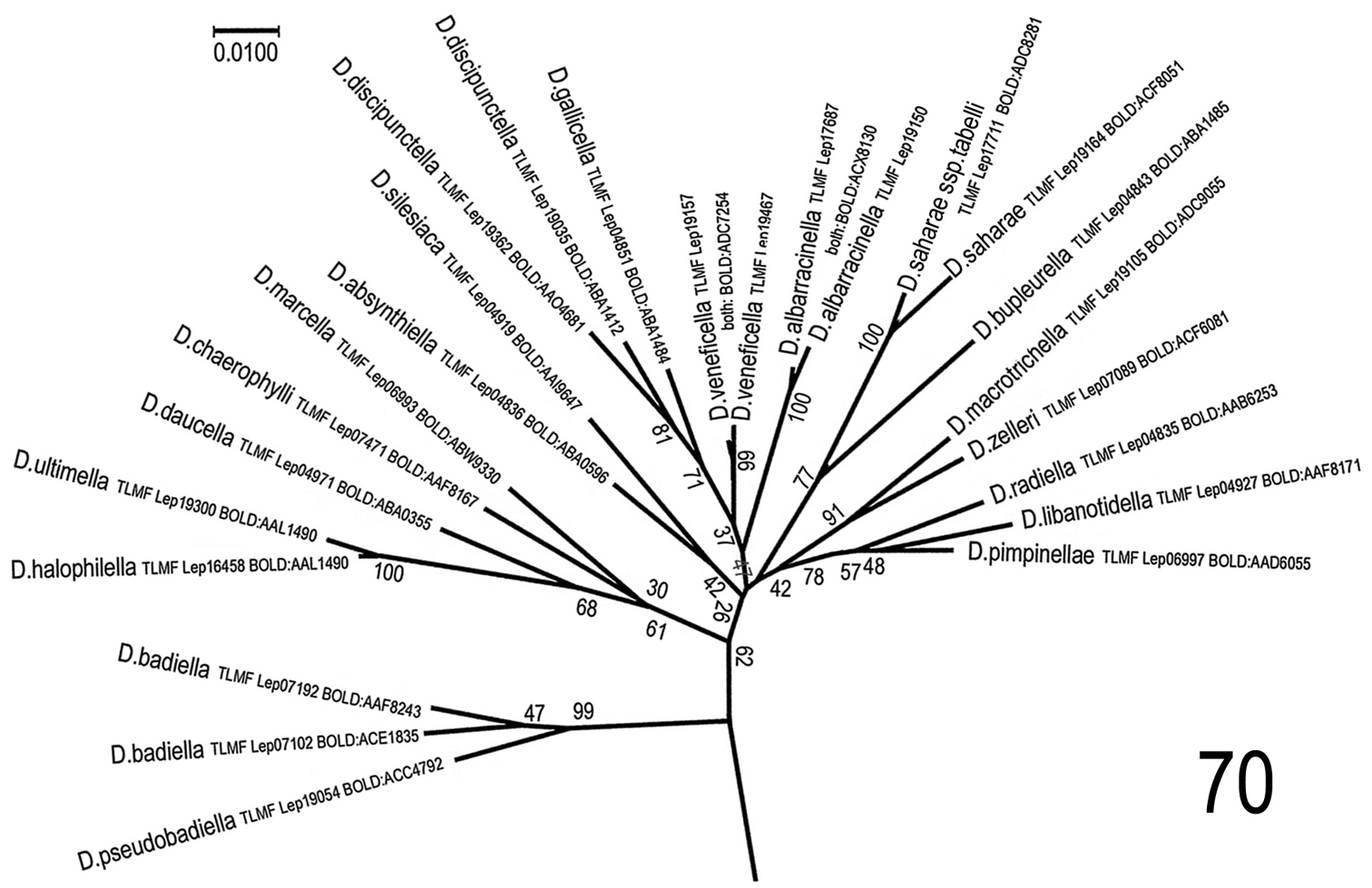
|
||
|
Maximum Likelihood analysis of species from the genus Depressaria: D. albarracinella, sp. n., D. saharae and selected species, predominately from the D. veneficella and D. pastinacella groups: In addition to the selection used for the neighbour joining tree, the following species were included: D. absynthiella Herrich-Schäffer, 1865 (TLMF Lep 04836, BOLD:ABA0596) D. badiella (Hübner,[1796]) (TLMF Lep 07102, BOLD:ACE1835 and TLMF Lep 07192, BOLD:AAF8243; D. halophilella Chrétien, 1908 (TLMF Lep 16458, BOLD:AAL1490); D. macrotrichella Rebel, 1917 (TLMF Lep 19105, BOLD:ADC9055); D. marcella Rebel, 1901 (TLMF Lep 06993, BOLD:ABW9330); D. pimpinellae Zeller, 1839 (TLMF Lep 06997, BOLD:AAD6055); D. pseudobadiella Nel, 2011 (TLMF Lep 19054, BOLD:ACC4792); D. silesiaca Heinemann, 1870 (TLMF Lep 04919, BOLD:AAI9647). The evolutionary history was inferred by using the Maximum Likelihood method based on the Tamura-Nei model. The tree with the highest log likelihood (-4818.52) is shown. Initial trees for the heuristic search were obtained automatically by applying Neighbor-Join and BioNJ algorithms to a matrix of pairwise distances estimated using the Maximum Composite Likelihood (MCL) approach, and then selecting the topology with superior log likelihood value. The tree is drawn to scale, with branch lengths measured in the number of substitutions per site. The proportion of sites where at least 1 unambiguous base is present in at least 1 sequence for each descendent clade is shown next to each internal node in the tree. The analysis involved 54 nucleotide sequences from selected species of Agonopterix and Depressaria. Only the Depressaria-part of the tree is shown here. Codon positions included were 1st+2nd+3rd+Noncoding. All positions containing gaps and missing data were eliminated. There were a total of 657 positions in the final dataset. Evolutionary analyses were conducted in MEGA7: Molecular Evolutionary Genetics Analysis version 7.0 for bigger datasets (Kumar, Stecher and Tamura 2015). The result is shown in radiation graphic, because in this view the evolutionary aspect is visualized better than in traditional tree. |